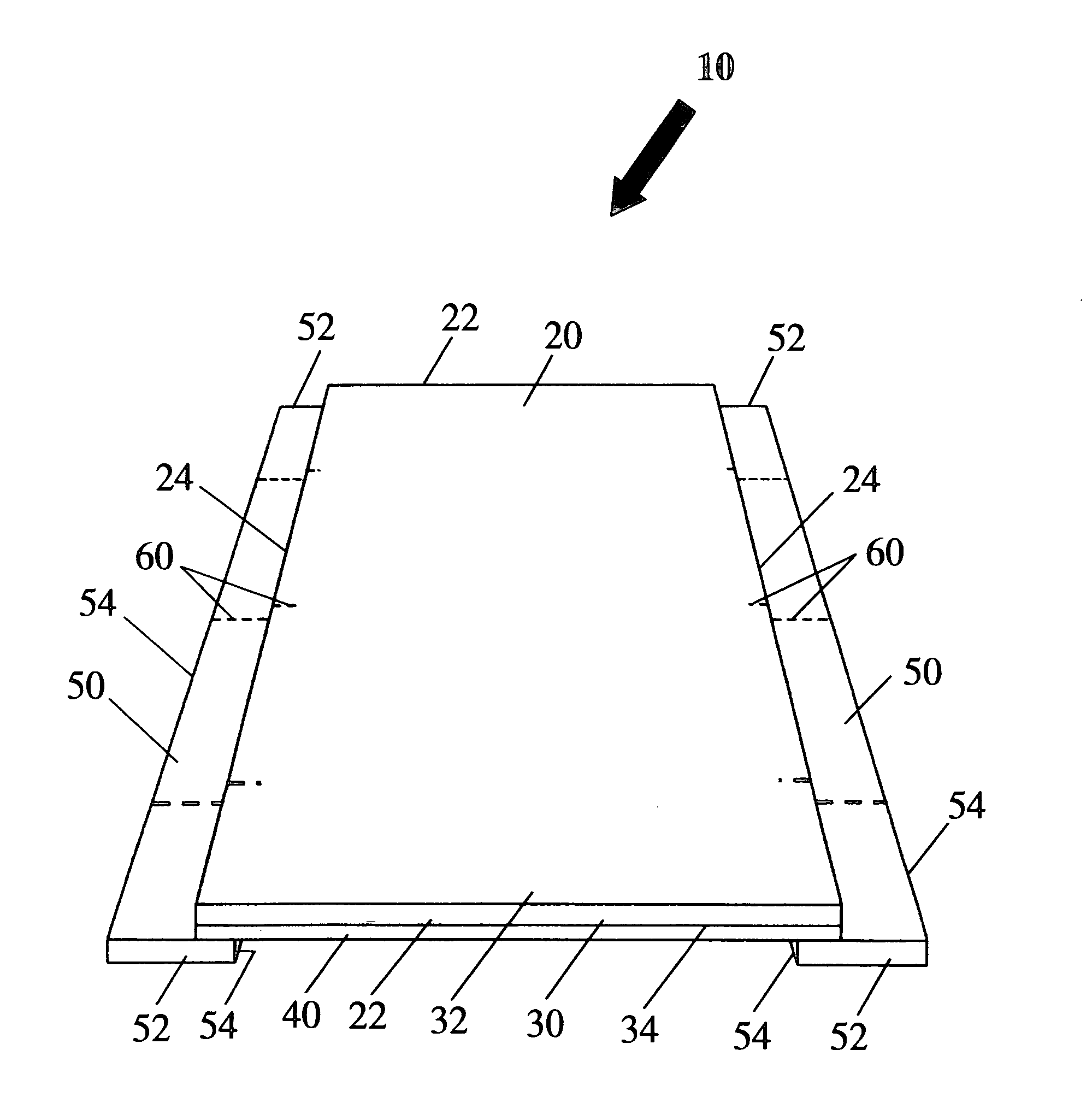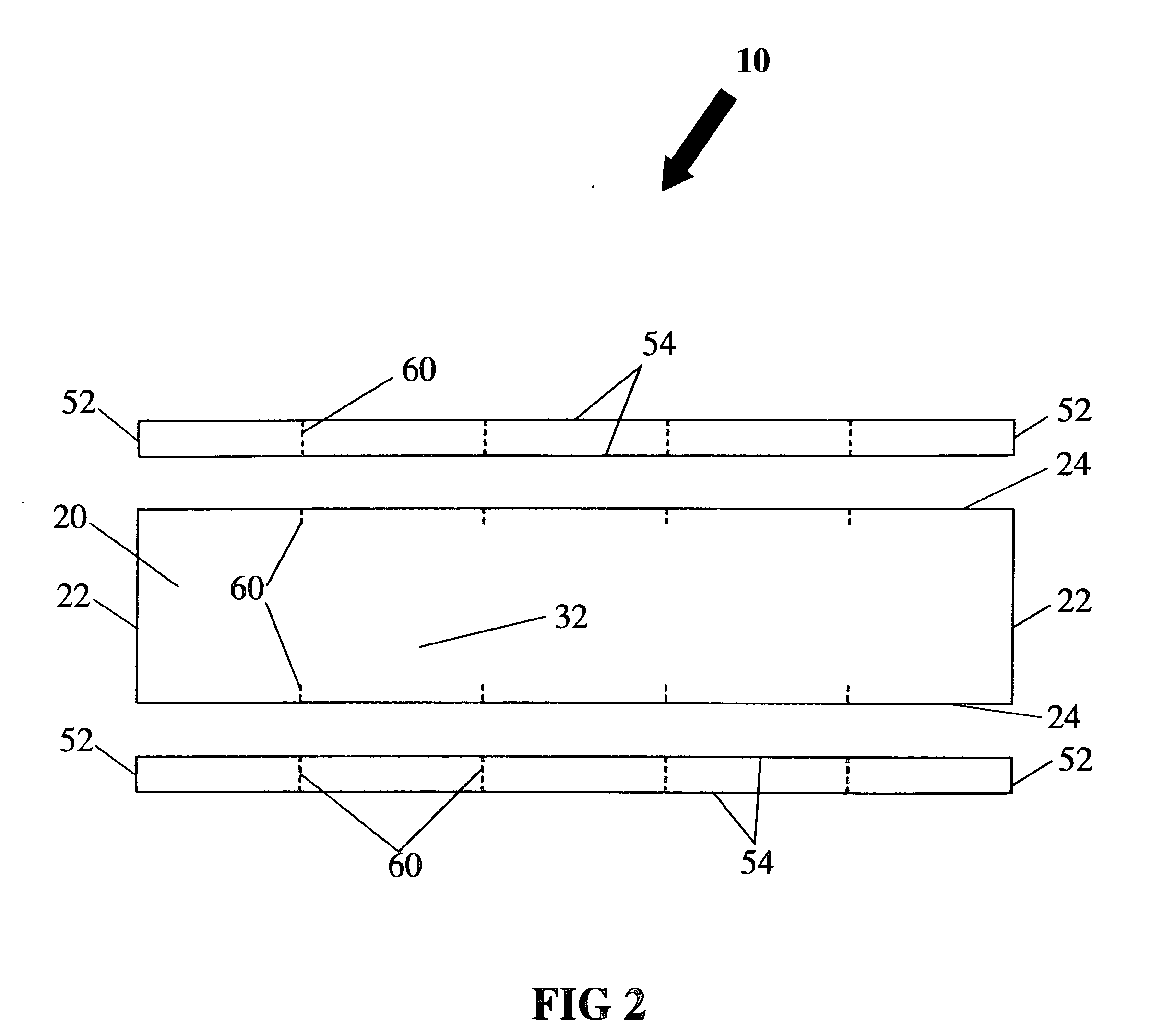Adhesive tape device
a technology of adhesive tape and tape, which is applied in the direction of identification means, instruments, seals, etc., can solve the problems of inability to work properly, complex techniques of adhesive tape, and immense frustration of consumers in separating the adhesive-coated surface from the underlying non-adhesive surface of the roll of tape, etc., to achieve the effect of improving the combination of convenience and utility
- Summary
- Abstract
- Description
- Claims
- Application Information
AI Technical Summary
Benefits of technology
Problems solved by technology
Method used
Image
Examples
Embodiment Construction
[0027] The exemplary embodiments described herein detailed for illustrative purposes are subject to many variations in structure and design. It should be emphasized, however, that the present invention is not limited to a particular adhesive tape device as shown and described. Rather, the principles of the present invention can be used with a variety of adhesive tape device configurations and structural arrangements. It is understood that various omissions and substitutions of equivalents are contemplated as circumstances may suggest or render expedient, but it is intended to cover the application or implementation without departing from the spirit or scope of the claims of the present invention.
[0028] The present invention provides an adhesive tape device for a relatively effortless method for manual separation of the adhesive-coated surface from the underlying non-adhesive surface of the roll of tape, and also eliminates the necessity for a tape-dispensing apparatus or other vari...
PUM
| Property | Measurement | Unit |
|---|---|---|
| width | aaaaa | aaaaa |
| length | aaaaa | aaaaa |
| surface textures | aaaaa | aaaaa |
Abstract
Description
Claims
Application Information
 Login to View More
Login to View More - R&D
- Intellectual Property
- Life Sciences
- Materials
- Tech Scout
- Unparalleled Data Quality
- Higher Quality Content
- 60% Fewer Hallucinations
Browse by: Latest US Patents, China's latest patents, Technical Efficacy Thesaurus, Application Domain, Technology Topic, Popular Technical Reports.
© 2025 PatSnap. All rights reserved.Legal|Privacy policy|Modern Slavery Act Transparency Statement|Sitemap|About US| Contact US: help@patsnap.com



